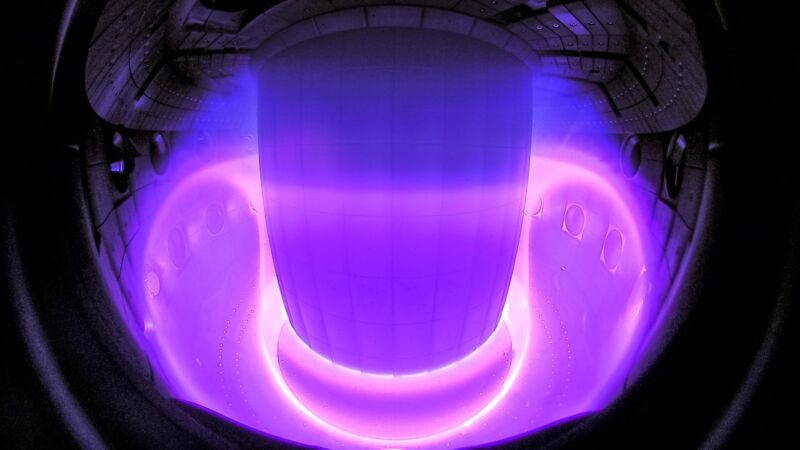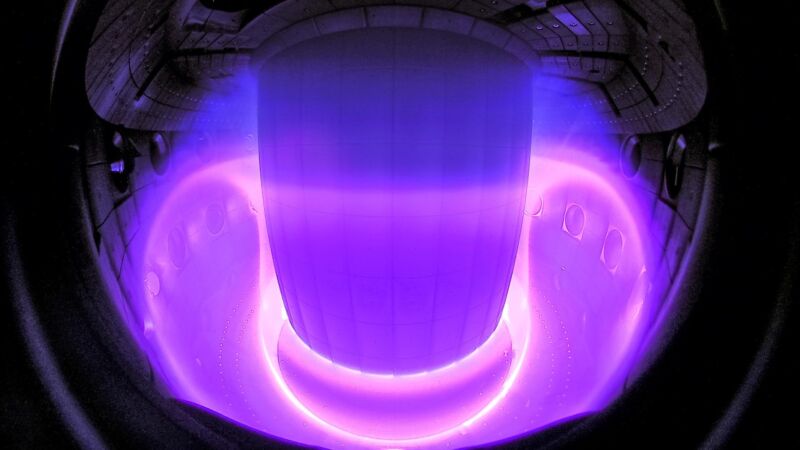
Enlarge / Plasma inside the tokamak at the EPFL. (credit: EPFL)
As the world waits for construction of the largest fusion reactor yet, called ITER, smaller reactors with similar designs are still running. These reactors, called tokamaks, help us test both hardware and software. The hardware testing helps us refine things like the materials used for container walls or the shape and location of control magnets.
But arguably, the software is the most important. To enable fusion, the control software of a tokamak has to monitor the state of the plasma it contains and respond to any changes by making real-time adjustments to the system’s magnets. Failure to do so can result in anything from a drop in energy (which leads to the failure of any fusion) to seeing the plasma spill out of containment (and scorch the walls of the container).
Getting that control software right requires a detailed understanding of both the control magnets and the plasma the magnets manipulate. Or it would be more accurate to say, getting that control software right has required. Because today, Google’s DeepMind AI team is announcing that its software has been successfully trained to control a tokamak.





